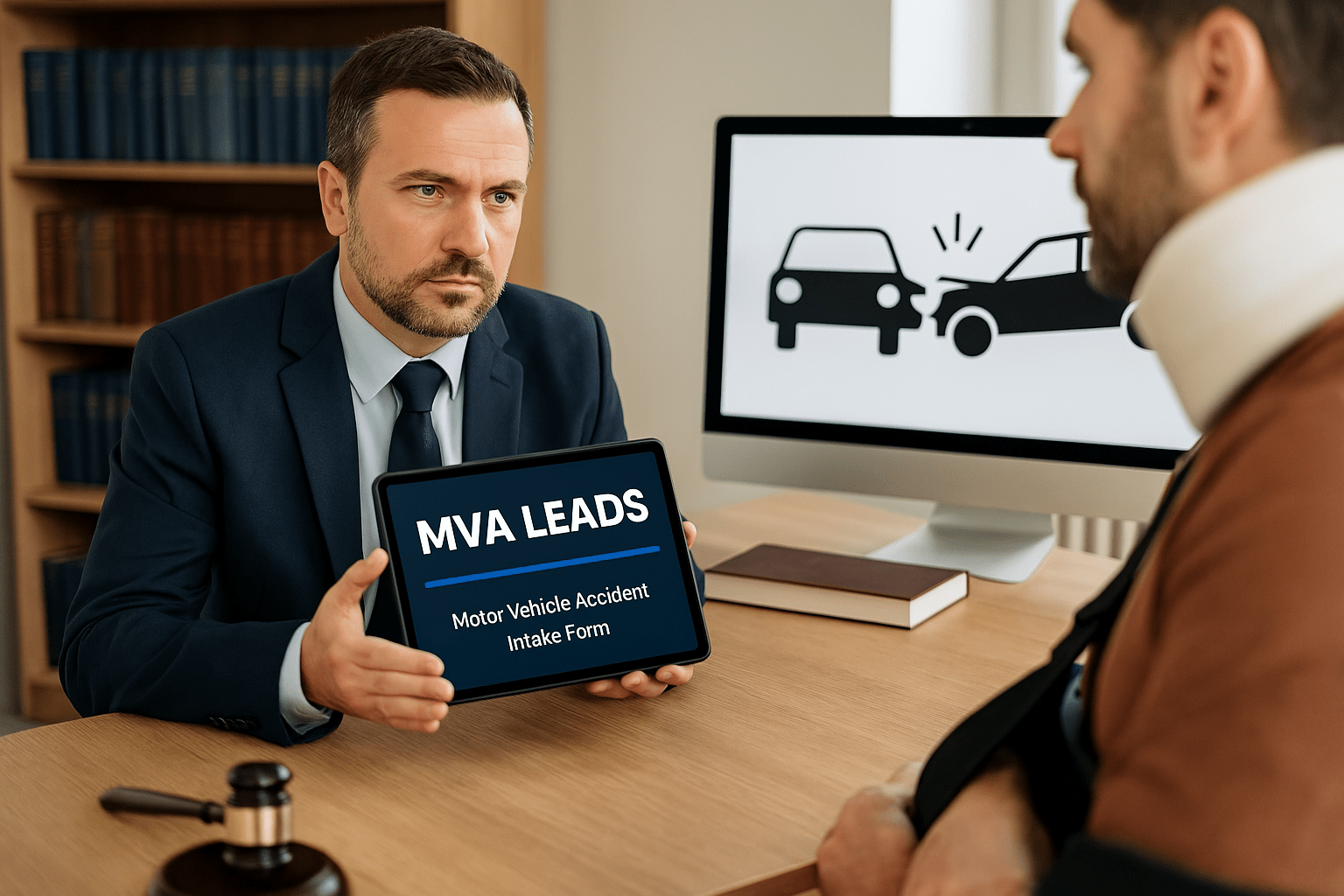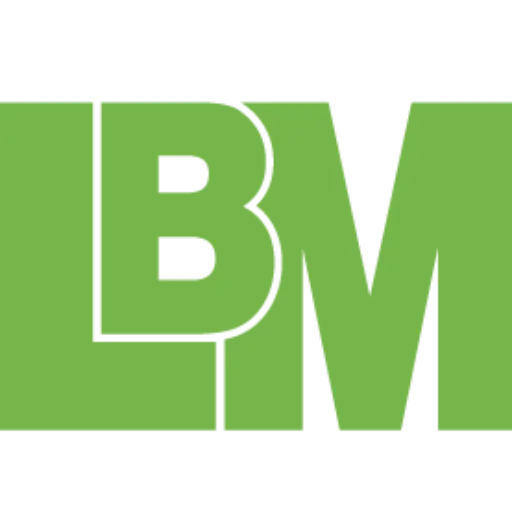- Mon - Fri: 8.30 AM - 5:00 PM
- 26565 Agoura Rd., 200, Calabasas, CA 91302
- 818-884-8075

What Are MVA Leads? A Guide for Law Firms
What Are MVA Leads and Why They Matter for Personal Injury Law Firms
For personal injury attorneys and law firms looking to grow their caseload with high-value clients, understanding what MVA leads are—and how to use them effectively—can be a game changer.
MVA stands for Motor Vehicle Accident, and MVA leads refer to prospective clients who have been recently involved in car, truck, or other vehicle-related crashes and are now actively seeking legal assistance. These are among the most lucrative and conversion-ready types of personal injury leads available to lawyers.
Term Defined Clearly: Understanding the Meaning of “MVA” in Legal Marketing
In legal and insurance contexts, the abbreviation MVA is commonly used to refer to a motor vehicle accident. This includes a wide range of crash scenarios involving cars, trucks, motorcycles, bicycles, or pedestrians.
From a legal marketing perspective, MVA leads are individuals who:
- Were recently involved in a motor vehicle crash
- Are experiencing medical issues, financial strain, or legal uncertainty
- Are actively seeking help from an attorney to navigate the aftermath
These leads are usually acquired through online channels and routed to law firms through lead generation platforms or marketing funnels.
Common Types of MVAs That Generate Legal Leads:
- Rear-end collisions
- T-bone or side-impact crashes
- Multi-vehicle pileups
- Truck accidents
- Pedestrian or bicycle accidents involving a vehicle
- Motorcycle crashes
- Rideshare-related accidents (e.g., Uber, Lyft)
Each of these cases can result in serious injuries and complex liability issues—making the affected individuals prime candidates for legal representation.
Value Breakdown Guide: Why MVA Leads Matter for Personal Injury Lawyers
When it comes to legal lead generation, MVA leads stand out for their urgency, volume, and case value. These leads represent individuals who are in pain, under pressure, and often unsure of how to move forward. That’s exactly when they begin looking for help—and when your law firm needs to be ready.
Why These Leads Convert Well:
- High Intent: These prospects are actively searching for legal support—not casually browsing. They’ve had a traumatic experience and are looking for a solution.
- Time-Sensitive Needs: From medical bills to insurance pressure, MVA leads often have immediate concerns that require legal intervention.
- High Case Value: Many MVAs involve injuries, missed work, long-term treatment, or property damage—making these cases financially worthwhile for attorneys.
- Predictable Intake Process: Because MVA claims follow a familiar path (e.g., insurance negotiations, medical documentation, liability review), law firms can intake, qualify, and manage these leads efficiently.
These characteristics make MVA leads ideal for firms that want to scale their practice while maintaining strong conversion rates and ROI.
Lead Types Explained: Types of MVA Leads Attorneys Should Know
Not all MVA leads are the same. The quality, delivery method, and exclusivity of a lead can make a significant difference in how likely it is to convert. Here’s a breakdown of the main types personal injury lawyers may encounter:
Exclusive vs. Shared MVA Leads
- Exclusive leads are delivered to a single law firm and typically cost more, but the competition is eliminated.
- Shared leads are distributed to multiple firms at once—lower cost, but response time becomes critical.
Live Transfer Calls vs. Web Form Submissions
- Live transfer leads are calls where the prospect is pre-qualified by a third party and then transferred to your firm in real-time.
- Web form leads come from landing pages or websites where the user fills in their information and requests contact.
Real-Time vs. Aged Leads
- Real-time leads are fresh—often just minutes old—and typically convert at a higher rate.
- Aged leads are older, lower-cost leads that didn’t convert initially but may still be viable with strong follow-up.
Qualified vs. Unqualified Leads
- Qualified leads meet certain criteria (e.g., jurisdiction, injury present, no prior representation).
- Unqualified or cold leads may require screening and filtering by your intake team.
Understanding these lead types helps you choose the right provider, budget accordingly, and tailor your intake process to fit the lead quality.
Lead Source Overview: How MVA Leads Are Generated
Behind every MVA lead is a process—a digital funnel designed to connect people in need with legal help. Understanding how these leads are sourced helps attorneys evaluate their quality and determine whether to generate them in-house or buy them from a trusted provider.
The Most Common Sources of MVA Leads:
1. Search Engine Ads (Google Ads, Bing Ads)
Paid search campaigns target high-intent phrases like:
- “What to do after a car accident”
- “Car accident lawyer near me”
- “Hurt in crash legal help”
These ads lead to landing pages where users submit their information in exchange for a free consultation.
2. Social Media Campaigns
Platforms like Facebook and Instagram use demographic, behavioral, and location-based targeting to serve ads to people who may have recently been in an accident or shown interest in personal injury topics. Leads are collected through in-app forms or by directing users to optimized landing pages.
3. Organic Search (SEO)
Some MVA leads come through law firm websites that rank well in Google for relevant queries. Blog content, FAQs, and city-specific landing pages can attract organic traffic that converts into leads.
4. Legal Directories and Aggregator Sites
Sites like Avvo, FindLaw, or Nolo generate traffic through legal content and match leads to attorneys based on criteria like geography and practice area.
5. Third-Party Lead Providers
Companies like Legal Brand Marketing run multi-channel campaigns, pre-qualify leads, and deliver them to attorneys in real-time. These leads are often more refined and ready for immediate follow-up.
Quality Criteria Checklist: What Makes a High-Quality MVA Lead?
Not all MVA leads are worth your time. To get the best return on your investment, it’s essential to work with leads that are qualified, current, and aligned with your firm’s target criteria.
Key Qualities to Look For:
Jurisdiction Match
The lead should reside or have had the accident in an area where you are licensed to practice. Leads outside your jurisdiction waste time and money unless you’re part of a referral network.
Presence of Injury
Cases involving injuries—especially those requiring medical treatment—are more likely to result in meaningful settlements. Soft tissue injuries, fractures, and long-term pain are common in MVA claims.
Police Report or Insurance Claim Filed
The existence of a police report or active insurance claim signals that the individual is serious and that documentation exists to support the case.
No Prior Legal Representation
One of the most important filters is ensuring that the lead hasn’t already hired an attorney. If they have, you may run into ethical issues and wasted effort.
Contact Willingness and Lead Freshness
Even a perfect lead won’t convert if they don’t answer your call or respond to texts. Fresh, real-time leads are more likely to engage and sign than aged leads that have gone cold.
Optional (But Valuable) Info:
- Medical provider already visited (ER, chiropractor, etc.)
- Missed work or income due to the crash
- Photos of damage or scene
- Description of fault or liability
The more information you have upfront, the better you can triage the lead and prepare for intake.
Conversion Strategy Steps: How Lawyers Use MVA Leads to Grow Their Caseload
Once a law firm receives MVA leads, the next step is converting them into clients. This requires a mix of speed, empathy, and structure. Here’s how the process typically works for top-performing firms:
Step 1: Immediate Response
- Respond within 5–10 minutes of receiving the lead
- Use a warm, understanding tone—this person may be in pain or overwhelmed
- Confirm accident details and location
- Schedule a consultation or send a retainer if qualified
Step 2: Structured Intake
Use a call script or CRM-based intake form to gather:
- Date and time of the accident
- Type of vehicle(s) involved
- Medical treatment received
- Insurance and police report status
- Whether they’ve spoken to another lawyer
Step 3: Follow-Up Sequence
If the lead isn’t ready to sign immediately, set up:
- A text message reminder within 24 hours
- A follow-up call the next business day
- A brief email summarizing your conversation and next steps
Consistency wins—many MVA leads convert on the second or third contact attempt.
Step 4: Case Onboarding
Once a client signs the retainer, your team should:
- Order the police report
- Collect medical records
- Begin communication with insurance companies
- Track treatment updates and wage loss
This early engagement builds client trust and strengthens your case from day one.
Comparison Snapshot: MVA Leads vs. Other Personal Injury Leads
Not all personal injury leads are created equal. While MVA leads are among the most in-demand, they represent just one segment of the broader personal injury market. So how do they compare to other lead types?
Common Personal Injury Lead Types:
- MVA Leads (Motor Vehicle Accident): Typically involve auto, truck, or motorcycle crashes. These leads often include injuries, liability questions, and active insurance claims.
- Premises Liability Leads: Related to slip and fall cases or accidents on unsafe property. These can be harder to prove due to complex negligence claims.
- Medical Malpractice Leads: High-value but rare and difficult to qualify due to the complexity of medical standards and expert witness requirements.
- Product Liability Leads: Often tied to class action or defective product lawsuits; may take longer to develop and require specialized experience.
- Workers’ Compensation Leads: Focused on workplace injury claims and often governed by state-specific rules and benefits.
Why MVA Leads Stand Out:
- Volume: Motor vehicle accidents happen daily, making MVA leads more abundant.
- Urgency: Accident victims often need immediate legal help, leading to faster intake and case progression.
- Conversion Rate: Because of their high intent and legal complexity, MVA leads tend to convert more reliably than general inquiries.
- Predictability: Most firms have well-developed processes for MVA case intake, management, and settlement negotiations.
In short, MVA leads offer a balance of quantity, urgency, and value that makes them highly attractive for attorneys looking to grow their personal injury practice.
Compliance Rules Guide: Ethical Considerations for Handling MVA Leads
Lead generation in the legal space is heavily regulated. Attorneys must ensure their marketing partners and intake practices follow the ABA Model Rules and state-specific ethics guidelines.
Compliance Essentials:
- Leads must come from consumer-initiated contact
- Your firm must clearly identify itself in follow-up communications
- No fee-sharing with non-lawyers—pay per lead, not per case
- You should have a written agreement with your lead provider
- Always comply with jurisdiction-specific advertising rules
A quality lead provider like Legal Brand Marketing ensures that all leads are ethically sourced and bar-compliant.
Scalable Growth Tactics: Leverage MVA Leads to Grow Your Injury Law Practice
Understanding how MVA leads work—and how to effectively convert them—is essential for any personal injury law firm that wants to grow its caseload with consistency and efficiency. These leads are high-intent, time-sensitive, and often come with significant case value. When paired with a responsive intake system and ethical lead generation practices, they can fuel predictable growth and stronger client outcomes.
Whether you’re handling a solo practice or managing a multi-state firm, a refined MVA lead strategy gives you the ability to serve accident victims at the exact moment they’re seeking help. That’s how you build trust, win more cases, and outperform the competition.
Scale Your Firm with High-Intent, Exclusive MVA Leads
Legal Brand Marketing delivers exclusive, high-quality MVA leads with real-time delivery, customizable filters, and ethical practices that keep your firm in compliance. Contact us to start scaling your intake with confidence.
Here’s how Legal Brand Marketing supports your growth
- Real-time delivery for faster client engagement
- Targeting by geography, case type, and injury status
- No lead sharing—each inquiry goes to your firm only
- Compliant marketing that aligns with ABA and state bar rules
Start getting more MVA leads today with Legal Brand Marketing.
Frequently Asked Questions (FAQs)
1. Can MVA leads include pedestrian or rideshare accidents?
Yes. MVA leads can involve cars, motorcycles, trucks, pedestrians, bicyclists, and rideshare vehicles like Uber and Lyft.
2. How fast should I respond to an MVA lead?
The sooner, the better. Firms that respond within 5–10 minutes significantly outperform slower competitors.
3. Are MVA leads compliant with legal ethics?
Yes—when generated through consent-based, consumer-initiated channels and properly disclosed communications.
4. What’s the average cost of a high-quality MVA lead?
Costs vary, but exclusive, pre-qualified leads typically range from $200–$500. ROI depends on case value and close rate.
5. Can I scale my firm using only MVA leads?
Many personal injury firms do. MVA leads offer the volume, urgency, and value needed for scalable client acquisition.
Key Takeaways: What Attorneys Need to Know About MVA Leads
- MVA leads are prospects actively seeking legal help after a motor vehicle accident.
- These leads convert well because they are urgent, high-intent, and often high-value.
- Lead types include exclusive, live transfer, shared, real-time, or aged—each with its own pros and cons.
- Fast response and structured intake are critical to maximizing conversion.
- Partnering with an ethical lead provider like Legal Brand Marketing helps firms scale with confidence.




